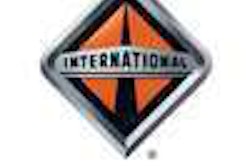The driver shortage seems to have receded along with the economy. Sooner or later, it will return. In 2005, a report produced for the American Trucking Associations by Global Insights predicted that by 2014 the driver shortage would reach 111,000.
Driver demographics are not likely to change. Therefore, fleet executives will have to find ways to significantly reduce the number of drivers and trucks they need to deliver freight.
In coming years, the very paradigm of transportation will have to change from one of competition to collaboration, says Brittain Ladd, director of logistics and manufacturing for Cognizant Technology Solutions.
Prior to his role as a consultant, Ladd worked in senior management at several major carriers and shippers, including Dell. He has concluded that current solutions for driver shortages and asset utilization are too simplistic and ineffectual for carriers.
Ladd developed new delivery models for transportation that he calls Transportation Rendezvous Zones (TRZ) and Driver & Trailer Share. These models, if enacted, could ease the driver shortage by improving asset utilization and thus requiring fewer trucks and drivers, he says.
The idea behind TRZ is for drivers on long-haul routes to deliver trailers to staging areas located outside major cities. Trailers would be shuttled to and from final pickup-and-delivery locations by trucks running on alternative fuels such as liquid natural gas and electricity.
The TRZ concept is similar to the relays, hub-and-spoke operations and interline agreements that carriers use today, but it expands these operational efficiencies on a much broader, national scale to reduce congestion and pollution. Ladd says the Environmental Protection Agency currently is modeling his concept.
Driver & Trailer Share is a more aggressive idea, but like TRZ, the concept already should be familiar. Some carriers use slip-seating in their operations to share drivers and equipment among different divisions. Some also use software optimization systems to identify opportunities throughout their network to swap drivers and loads at any time of day. Ladd’s idea is to use transportation management software with optimization capability to maximize the utilization of equipment on a much larger scale than has ever been attempted.
“If you only manage within your own network, you can only do so much,” he says. The concept is for multiple companies to collaborate and share drivers, equipment and freight. Even direct competitors could benefit.
“In a nutshell, Driver & Trailer Share is a concept whereby any driver can drive any truck for any carrier with no restrictions on returning in the same truck they were first dispatched. Any carrier can pull any trailer from any carrier. The goal is to utilize equipment as close to 24 hours a day, seven days a week as possible.”
Ladd says that based on initial analysis from several leading supply chain institutions, this type of model could remove 24 percent of trucks on the road today. Carriers most likely would pay drivers on a percentage basis of the load’s revenue, and a third-party logistics provider would administer Driver & Trailer Share. Even so, dispatchers and other personnel from carriers could be stationed at the third party to manage their own drivers, although doing so only would increase a carrier’s costs.
In the long run, no carrier will have a competitive advantage if driver shortages, logistics costs and environmental pressures continue to rise. Shippers only will find alternative ways to move freight, such as by rail, short-sea shipping or in other yet-to-be discovered ways.
“There is nothing wrong with collaborating with competitors or questioning how things have been done,” Ladd says. “Does anyone truly believe that we can prepare for the transportation problems of the future using solutions from today or the past?”










